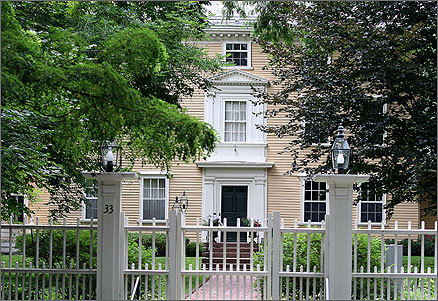
Note. From "Just How Fast Has College Tuition Grown?" by Danielle Kurtzleben. 2013 October 23. U.S. News & World Report. Copyright 2015 © U.S. News & World Report LP.
This chart shows the change in growth of tuition each year from 2003 to 2012 compared to the change in growth of the median household income. While we are still recovering from the recent economic recession, the cost of college has continued to grow faster than the average household income. This limits the options for many Americans who wish to further their education.

Note. From "Just How Fast Has College Tuition Grown?" by Danielle Kurtzleben. 2013 October 23. U.S. News & World Report. Copyright 2015 © U.S. News & World Report LP.
Tuition has grown much faster than other areas in which we typically see price increases. This shows faster growth than the annual rate of inflation.
One factor that causes tuition to be more expensive each year is the increase of non-faculty staff positions. Their salaries, benefits, and the cost of equipment and staff that they need to perform their job contributes to increased tuition for students.
Note. From "Losing Focus: The Annual Report on the Economic Status of the Profession, 2013-14". By John W. Curtis & Saranna Thornton. 2014 March-April. AAUP.
As is evidenced in the chart above, the increase of full-time non-faculty staff from 1975 to 2011 is 369%. Even with the reasoning that additional staff would need to be hired in order to be responsible for increased enrollment, new degree programs, and other projects, this increase is higher than it should be.
The enrollment increases at different institutions do not justify most of the administrative staffing increases. This searchable table from The New England Center for Investigative Reporting allows you to input a school's name and it gives you the enrollment and staffing changes from 1987 to 2011. As an example, at the University of Miami, there has been an 204% increase in administrators, a 258.40% increase of professional staff, and only a 39.50% increase in enrollment since 1987.
Note. From "Losing Focus: The Annual Report on the Economic Status of the Profession, 2013-14". By John W. Curtis & Saranna Thornton. 2014 March-April. AAUP.
Many of these administrators often receive added benefits, such as housing costs included in the University's Presidents pay package which is paid for by student's tuition.

Note. From "What They Make, and Where They Live". By Dina Rudick & Jonathan Wiggs. 2008. Boston.com. © 2015 Boston Globe Media Partners, LLC.
This is the house that Harvard President Drew G. Faust resides. Its yearly rental is $96,537 and it is included in her pay package of $822,011.
Colleges are in fact spending more money on categories other than instruction.

Note. From "Losing Focus: The Annual Report on the Economic Status of the Profession, 2013-14". By John W. Curtis & Saranna Thornton. 2014 March-April. AAUP.
The table above shows how each expense category changed from 2000 to 2010. You can see that spending in instruction is less than spending in student services and institutional support. This is troubling because the purpose of these institutions is to provide quality education for its students and therefore the bulk of the spending should happen in instruction. Instead it seems as if colleges are looking for ways to provide lesser quality education while still raising prices.
There is not much that one can do about the cost of private institutes except declining to attend. As long as there are many who are willing to pay their price tag, these institutions will continue to charge what they will. However as public institutions are partially funded from state government, you can protest these prices by writing to your congressman/woman. In order for colleges to stop overcharging us for tuition we must speak up.
Ashley Machado
References:
Kurtzleben, D. (2013, October 23). CHARTS: Just How Fast Has College Tuition Grown? Retrieved from http://www.usnews.com/news/articles/2013/10/23/charts-just-how-fast-has-college-tuition-grown
Losing Focus: The Annual Report on the Economic Status of the Profession, 2013-14. (n.d.). Retrieved from http://aaup.org/reports-publications/2013-14salarysurvey
Marcus, J. (2014, February 6). New Analysis Shows Problematic Boom In Higher Ed. Administrators. Retrieved from http://necir.org/2014/02/06/new-analysis-shows-problematic-boom-in-higher-ed-administrators/
Rudick, D., & Wiggs, J. (2008). College president salaries and housing. Retrieved from http://www.boston.com/news/education/higher/galleries/061110_housing_and_pay_of_college_presidents?pg=4




